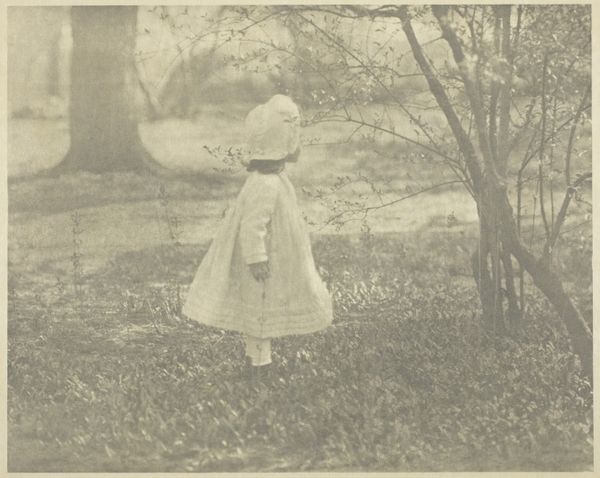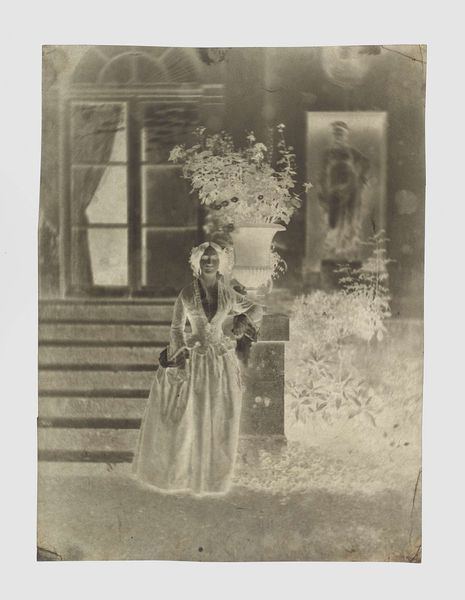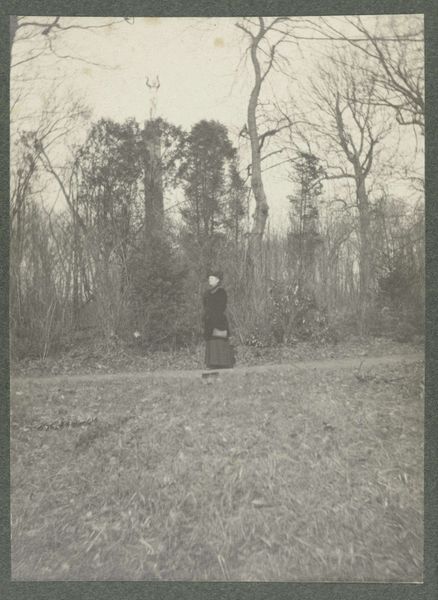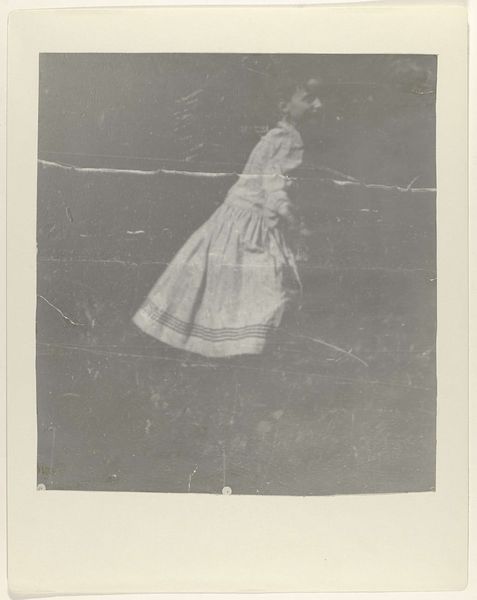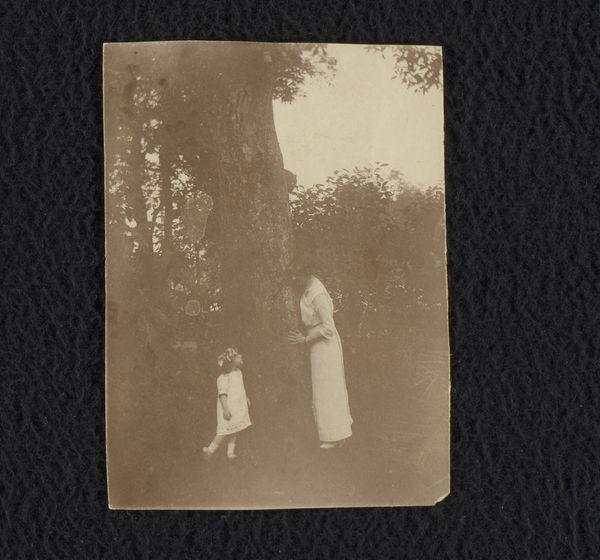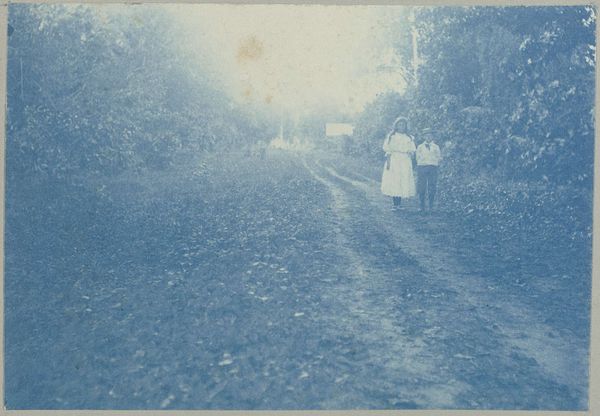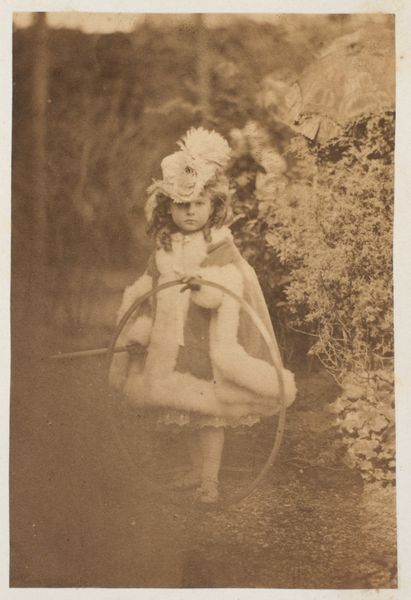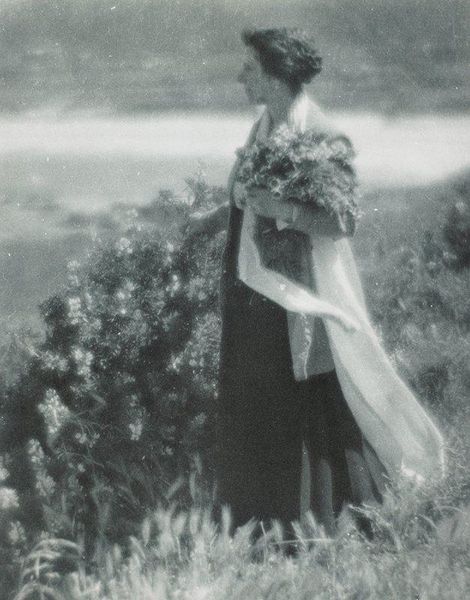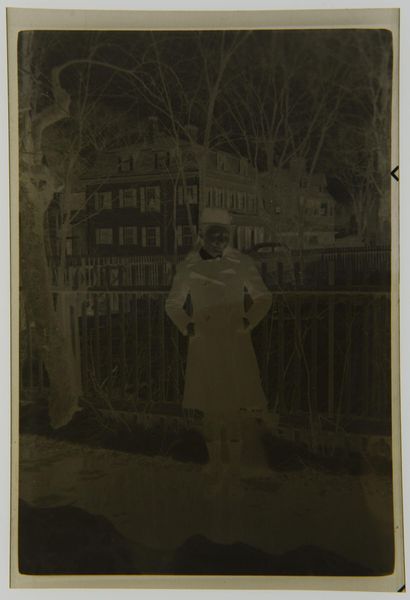
Dimensions: image: 12.5 × 15.8 cm (4 15/16 × 6 1/4 in.)
Copyright: National Gallery of Art: CC0 1.0
Editor: This is "Spring," a gelatin silver print by Alfred Stieglitz, probably created between 1901 and 1905. It shows a child standing in a field. There's something so soft and dreamlike about it. What stands out to you? Curator: I am drawn to the recurring symbolism of childhood innocence in landscapes, a pastoral ideal. Note the child's back turned. What is she looking at? That direction is vital; it's not just visual, it's directional, inviting us toward something, what Pierre Bourdieu calls "hysteresis," a symbolic effect of the photograph retaining qualities from its past. Editor: Hysteresis... So the child isn’t just standing there, she’s representing something bigger? Curator: Exactly. In art, particularly around the turn of the century, images of children often reflected anxieties and hopes about the future. Look at the budding branches, contrasting with the stoic presence of the large tree. Editor: Almost like she embodies that contrast herself? New life against something more established? Curator: Precisely! Stieglitz gives us an image laden with possibilities – will the child embrace change, or hold onto something familiar? Consider the white dress: Purity? Conformity? And what cultural narratives reinforce these assumptions? The image's ambiguity invites contemplation. Editor: I guess I was only seeing the surface, a cute picture of a kid. It’s so much more complex! Thanks for sharing that with me. Curator: It is in these subtle symbols and visual echoes that the true resonance of the image lies. We're not just seeing a photograph; we are experiencing cultural memory.
Comments
No comments
Be the first to comment and join the conversation on the ultimate creative platform.
